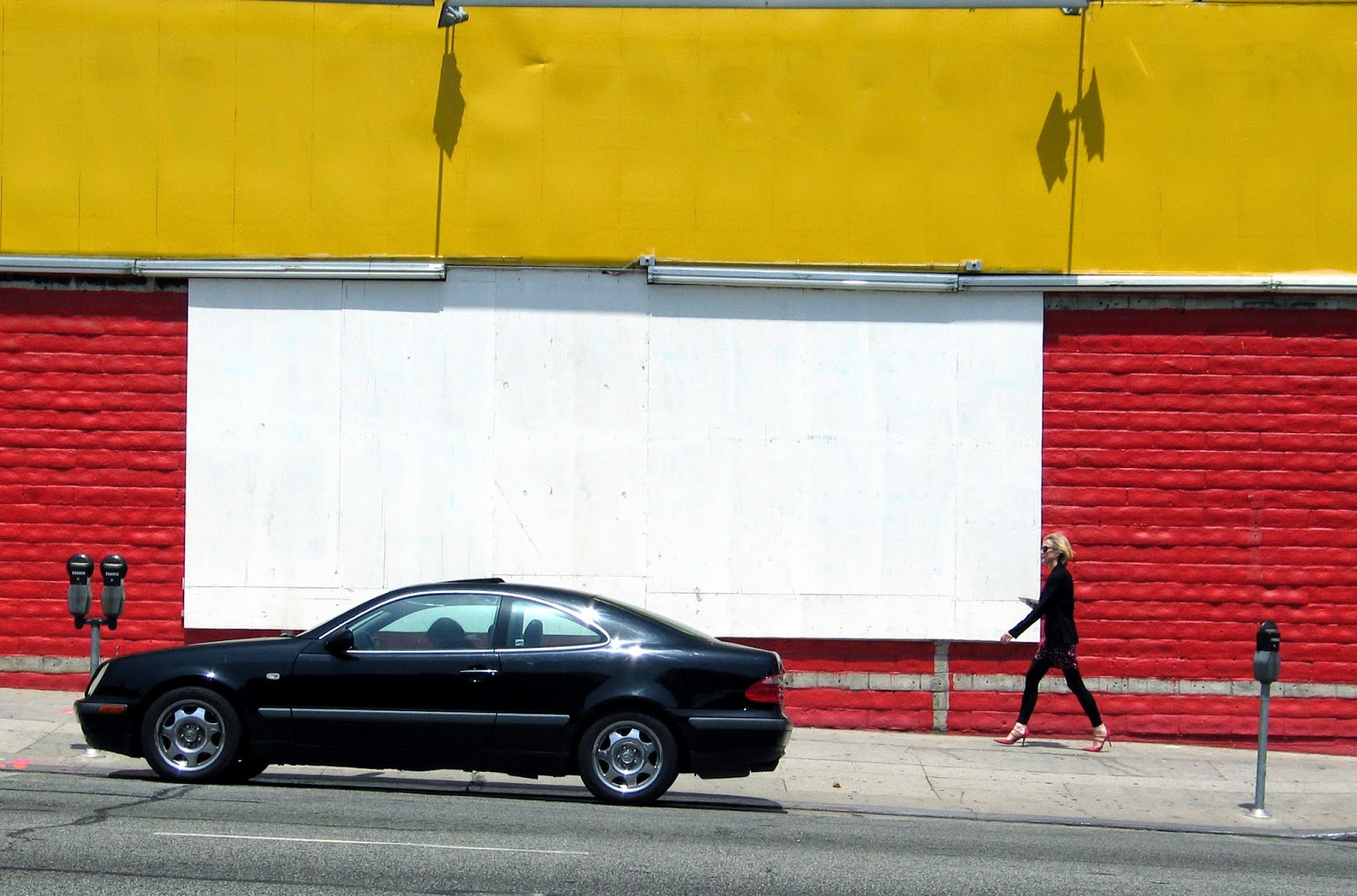I’ve come a little belatedly to a book by
Catherine Corman titled “Daylight Noir: Raymond
Chandler’s Imagined City.” I like it
a lot, but then I would. I’ve never met
any writer in Los Angeles who didn’t actively love Raymond Chandler, and not
many photographers either.
There’s always a “visual” element in
Chandler’s work, by which I mean that you “see” the world through his, or
Marlowe’s, eyes. And there have been
various books on Raymond Chandler’s LA, generally well-meaning tomes with some
slightly so-so photographs of the city, but Catherine Corman is the real
deal. For one thing, she’s Roger
Corman’s daughter, so her LA pedigree is unimpeachable, and she can certainly
do the noir look herself when she puts her mind to it.
Daylight
Noir consists of 50 or so moody, arty, square-format, black and white photographs,
mostly architectural in some sense, some of them showing very specific LA
locations, some of them kind of generic.
And attached to each is a quotation from Chandler. Again, some of which are very recognizable,
some less so.
The book has an introduction by Jonathan
Lethem (a seal of approval for sure) in
which he says, “If architecture is fate, then it is Marlowe’s fate to enumerate
the pensive dooms of Los Angeles, the fatal, gorgeous pretenses of glamour and
ease, the bogus histories reenacted in the dumb, paste-and-spangles cocktail of
style.’ Yes, Jonathan, but what if architecture
ISN’T fate?
But anyway, it’s surely a good sign that
Catherine Corman’s book sent me back to rereading Chandler’s novels, keeping an
eye out for architectural detail. Of
course in The Big Sleep we all
remember the hall of the Sternwood mansion, the entrance doors big enough to let
in a troop of elephants, and the stained glass showing a knight rescuing a
damsel in distress (that’s got to be pretty colorful, right?).
At the back of the house there’s a “wide
sweep of emerald grass and a maroon Packard,” and when Marlowe gets into the
greenhouse where he meets the General,
“The light had an unreal greenish color, like light filtered through an
aquarium tanks.” I’m seeing a fair
amount of color, aren’t you?
And
when Marlowe gets to Geiger’s house, oh boy, there’s a thick pinkish Chinese rug, a
broad low divan of old rose tapestry with some lilac-colored silk underwear
strewn across it, a couple of standing lamps with jade-green shades, and a
yellow satin cushion. Carmen Sternwood
is there, sitting naked on a fringed orange shawl. OK, maybe that’s décor rather than
architecture, but nevertheless this is some very colorful nor.
Now
obviously I wasn’t around in Chandler’s
time, but as I walk around LA these days it looks like the most intensely
colored cities I’ve ever been to. Sure
the color may be only skin (or stucco) deep, and sure there may be some dark things
happening behind those cheerfully colored walls, but that's the nature of the beast, right?
One of the architectural touchstones
from my earliest days of walking around in LA is the Blu Monkey Lounge on
Hollywood Boulevard. When I first saw
it, it looked like this:
It seemed intriguing, secretive, vaguely
sinister, a dive bar where bad things might happen. A little research suggested
it was in fact just a loud bar with DJs and expensive drinks, not exactly a rarity in
Hollywood, and not really my kind of place.
A little while late it looked like this:
I guess it was in some transient state
as all the buildings around it get gentrified,
demolished or refurbished. Maybe it was just being repainted. Anyway, the last time I saw it, it looked it
was like this:
You’ll notice that the word “monkey”
has disappeared from the name. And I guess that stucco is still a kind blue,
but it doesn’t yell “blue” the way it once did.
Isn’t it aquamarine, or maybe turquoise?
The Case of the Absent Monkey?
Well, maybe there is something noir-sounding about that after all.




















